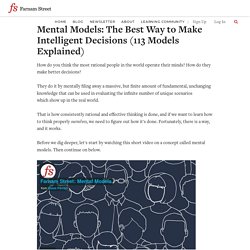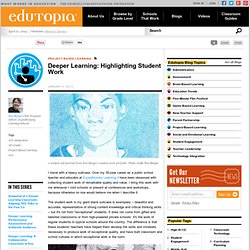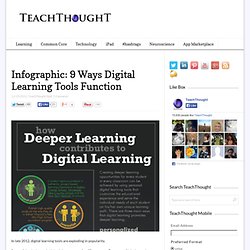

Pinterest. d1lhirsz7m8sbi.cloudfront.net/mindshift/wp-content/blogs.dir/42/files/2013/10/iLab_infographic_11x171.pdf. Deeper Competency-Based Learning - Vander Ark on Innovation. Mental Models. How do you think the most rational people in the world operate their minds?

How do they make better decisions? They do it by mentally filing away a massive, but finite amount of fundamental, unchanging knowledge that can be used in evaluating the infinite number of unique scenarios which show up in the real world. That is how consistently rational and effective thinking is done, and if we want to learn how to think properly ourselves, we need to figure out how it's done. Fortunately, there is a way, and it works. Before we dig deeper, let's start by watching this short video on a concept called mental models. It's not that complicated, right? The idea for building a “latticework” of mental models comes from Charlie Munger, Vice Chairman of Berkshire Hathaway and one of the finest thinkers in the world.
Munger's system is akin to “cross-training for the mind.” In a famous speech in the 1990s, Munger explained his novel approach to gaining practical wisdom: Building the Latticework 1. 2. 3. 4. Deeper Learning: Highlighting Student Work. A student self-portrait from Ron Berger's student work portfolio Photo credit: Ron Berger I travel with a heavy suitcase.

Over my 35-year career as a public school teacher and educator at Expeditionary Learning, I have been obsessed with collecting student work of remarkable quality and value. I bring this work with me whenever I visit schools or present at conferences and workshops, because otherwise no one would believe me when I describe it. The student work in my giant black suitcase is exemplary -- beautiful and accurate, representative of strong content knowledge and critical thinking skills -- but it's not from "exceptional" students.
It does not come from gifted and talented classrooms or from high-powered private schools. Student self-portrait Photo credit: Ron Berger When I work with educators around the country and pull this work out of my suitcase, it changes the vision of what is possible when students are allowed, compelled and supported to do great things. Dr. Stephen Steele, Futures Thinking on Teaching in the 21st Century. Critical Thinking, Research, and Problem Solving. Infographic: 9 Ways Digital Learning Tools Function. In late 2012, digital learning tools are exploding in popularity.

Some of that is due to the inherit interest new “stuff” promotes. But some of it is due to the ability of technology to empower each individual learner with information access, just in time learning, powerful learning simulations, and access to a network of peers and collaborators worldwide. The best part?
This potential is inherently motivating, as it even the youngest learners have instincts to gravitate towards what works, and away from what does not. 9 Ways Digital Learning Tools Function VIA Learning: PersonalizationMotivationPersistence THROUGH Schools: ProductionSimulationCollaboration BY Enhanced Access: AccessAccelerationOptions The infographic below from gettingsmart.com also lists many of these ideas while offering to several real-world examples of schools putting digital learning tools into action at the classroom level.
Deeper Learning. Www7.national-academies.org/bota/Education_for_Life_and_Work_report_brief.pdf. Wp-content/uploads/2012/12/Digital-Learning-Deeper-Learning-Full-White-Paper.pdf. Deeper Learning. Rahil Maharaj explains that attending Impact Academy, an Envision school in Hayward, California, has given him the inspiration and confidence to work hard and apply to college.

Watch the video >> 0 To succeed in the future, students will need to know how to analyze, collaborate, and innovate. But our education system isn’t as effective at preparing them as it could be. Watch the video >> 0 “In order to prepare young people to do the jobs computers cannot do we must re-focus our education system around one objective: giving students the foundational skills in problem-solving and communication that computers don’t have.” – Frank Levy and Richard J. Murnane, “Dancing with Robots”. Learn more >> 0 Tiana Alba-Lanzerin prepares to present her graduation portfolio at an Envision high school in San Francisco, California.
“I provide students with the opportunity to ask the questions, to become captains of their own learning.”